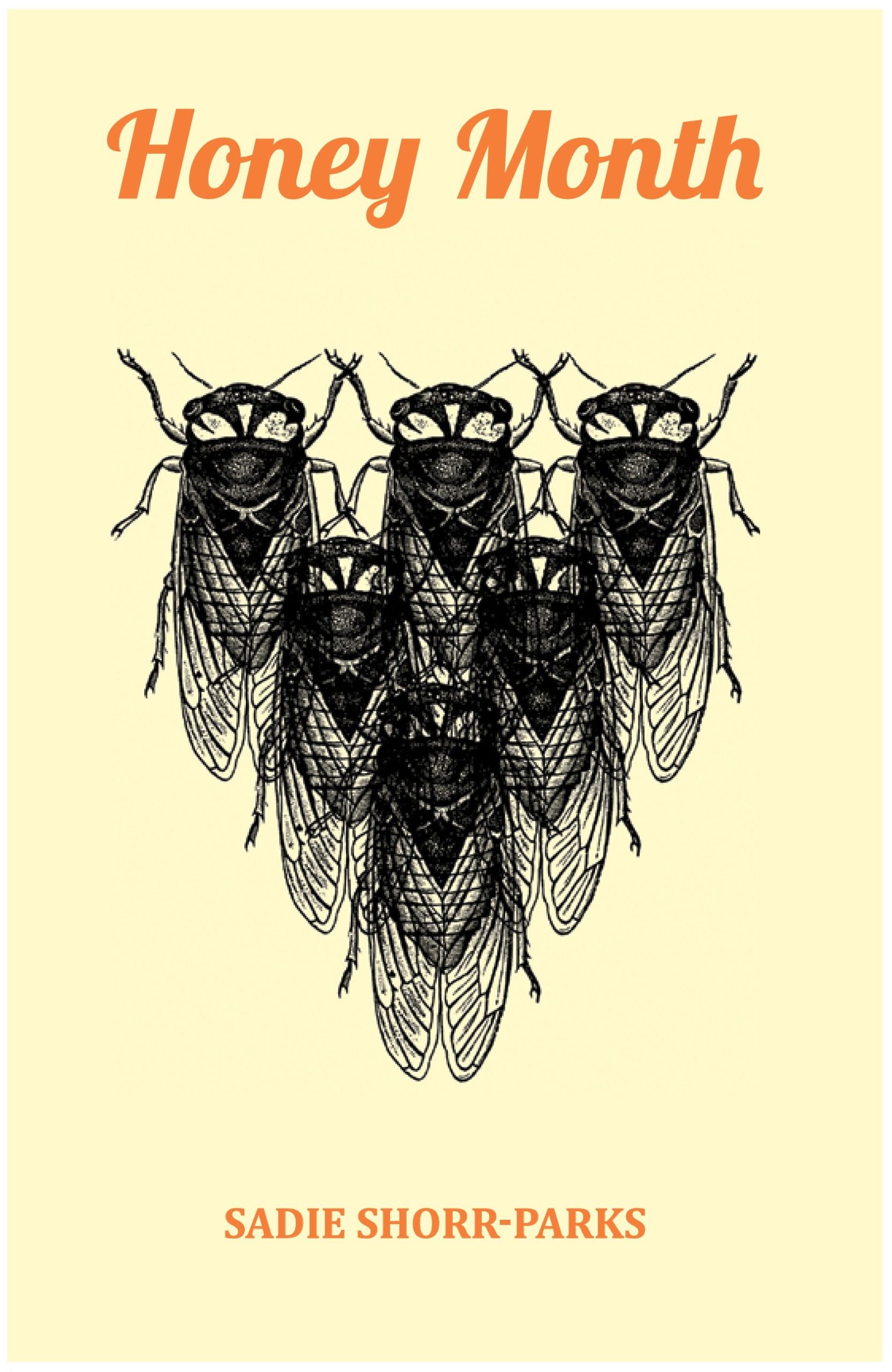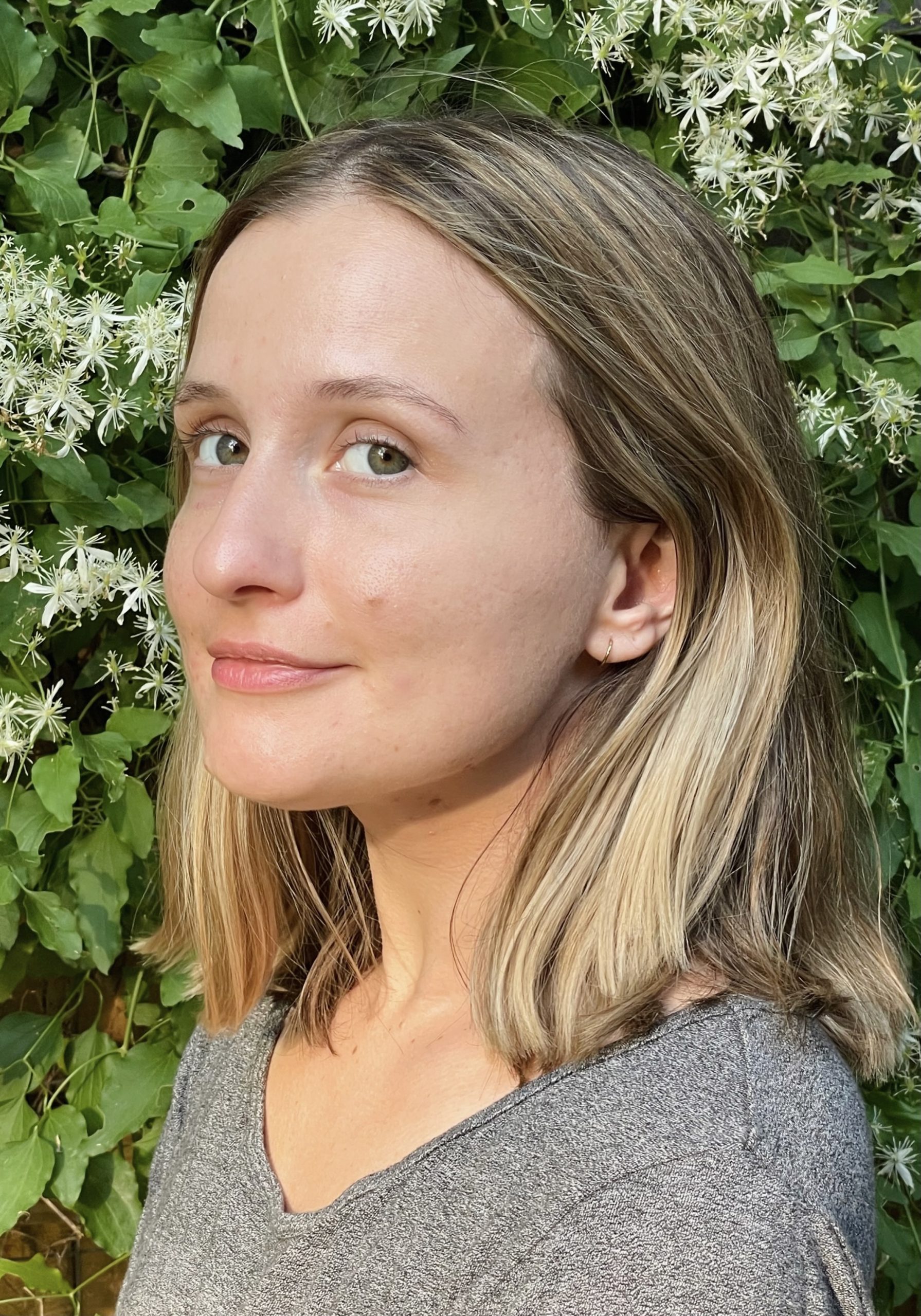Making Light of It | An Interview with Sadie Shorr-Parks
Interviews

By Gabrielle Bates
I was honored to be asked to interview the poet Sadie Shorr-Parks, author of the recently published debut collection Honey Month (Main Street Rag), for Southwest Review. Shorr-Parks is a poet with unique personality on the page, and her book revitalized me again and again with its imagery, humor, and attention to the world. The collection, primarily written during the speaker’s honeymoon, catalogs encounters with the beloved, the self, landscape, modes of transportation, cicadas, and memory with wry specificity and memorable vignettes from West Virginia, Pennsylvania, and Rome. We conducted the following conversation via email during one of the most sodden and cold springs in Seattle history, a period of time during which I was very grateful to have this poet’s vibrant, surprising, humorous, and transporting poems as company.
Gabrielle Bates: You attended AWP in Philadelphia this year, which is where you grew up. Returning to one’s hometown is often a fraught experience, but in this case, you had also just published your first book, in which the city of Philadelphia plays a key role. So I imagine it must have been a unique mix of emotions! Tell me a bit about the experience of being back in your hometown, among all those other writers, on the heels of your book release?

Sadie Shorr-Parks: Going back to my hometown of Philadelphia for the first time after Honey Month came out felt amazing. One of the best parts was walking around the city and seeing the places I’d written about in my book. For example, the station for the bus that I used to take to see my then boyfriend, now husband, is right near the AWP conference center. There is a poem about this bus in Honey Month titled “Said the Girl to the Mirror.” I passed this bus station on my way to give a reading after the conference, and it felt so strange. I noticed that instead of thinking about the time in my life when I was taking that bus, I thought instead about the poem I’d written. Being in Philly helped me notice how writing my book added some distance between me and the experiences in my book.
GB: “Said the Girl to the Mirror” is one of my favorite poems in Honey Month! It’s a poem of the city, a poem of frustration, full of the estranged intimacy of being a person in close proximity to other people; it’s both hilarious and poignant. In the poem, the speaker’s face gets in the way of the landscape she’s trying to see, which feels kin to this idea of poem as mediating presence, sliding a lens between past and present, creating a level of remove. What do you think is the primary impulse behind the poems in Honey Month when it comes to distance? To closeness?
SSP: Wow, that’s a great question. So much of Honey Month is about navigating distance and closeness, both geographically and emotionally. I’m realizing now how many of the poems deal with modes of transportation—the literal and figurative work of getting from one place to another.
The impetus for the entire book was a cicada plague that took over my town in West Virginia the same month as my honeymoon. I wasn’t teaching that month, so I spent a lot of time sitting on my porch writing poems and hanging out with my husband. In terms of closeness, there are a lot of love poems in the book, but there are also lot of poems where the relationship with nature is very intimate, almost exaggerated.
While putting the book together, I was also thinking back on the moments in my life when I felt profound distance from nature, family, love, and even myself. A lot of the poems are about heartbreak and longing to repair those relationships. In my case, that repair work tended to involve an element of relocation. I was very scattered, and Honey Month is the story of my reassembling.
GB: There is humor in Honey Month. I struggle to describe its exact flavor, but it definitely stands out as one of the book’s noteworthy attributes. In that regard, you remind me of a few other contemporary poets whose work I admire a lot: Diannely Antigua, Chessy Normile, Steven Espada Dawson, Morgan Parker, and Matthew Olzmann). They allow humor into the worlds of their poems, even if—or especially if—the poems hold tragic material at their cores. I love how humorous moments and swerves can set up a reader to feel sadness more acutely and vice versa. Have you always welcomed that side of yourself into your poems?
SSP: I think humor has an important place in poetry, or at least in a poet’s toolbox. A lot of times, something is funny because it is true or surprising—both of which are classic virtues of poetry. Both poetry and comedy tend to come from a moment being too well-observed.
For me, humor in art is tied up in the phrase “to make light of it.” I understand the risk of diminishing the importance of something by adding humor, even when your goal is to use humor to unburden a topic. But I think we can look at the phrase “make light of” in a different way. Sometimes, to “make light” means to shine or to illuminate. Taking something dark or dull and making light of it seems like the task of some poems. It’s also helpful to think of the painting technique chiaroscuro, which literally means “light-dark.” The idea with chiaroscuro is that having lots of contrast of light and dark adds drama and dimension to a painting, and I think that is true in poetry as well.
I also think that emotions are innately kind of funny. It’s so embarrassing and melodramatic to feel anything—and especially embarrassing to then write a poem about that feeling. I always come back to these lines by John Donne: “I am two fools, I know, / For loving, and for saying so / In whining poetry.”
GB: Oh my god, I’ve been thinking so much about embarrassment and poetry lately—those Donne lines are *cook’s kiss* perfection. There is something uniquely embarrassing about being a poet, truly! I think often about Mary Reufle’s idea (expressed in Madness, Rack, and Honey) that she might discover, at some point, she has consecrated her life to an imbecility. And then, as a kind of antidote, Wisława Szymborska: “I prefer the absurdity of writing poems to the absurdity of not writing poems.” Perhaps an odd swerve, but it feels related to me: in a previous interview in 2016, you mention that you write while listening to bebop. Is that still true? I’m dying to know when and how this habit formed (and the role of sound in your writing process, more generally)!
SSP: Yes, it’s so absurd to dedicate so much time writing a poem! I think that the superfluousness of poetry that Reufle describes in her book is what makes it so appealing to me. Writing poetry is such an absolute refusal to be productive, at least by our society’s standards. So much of a poet’s time is spent, like, motionlessly looking at a bird and generating no money.
I like to sit outside or by a window when I write. Now that I think about it, I don’t really listen to music that much anymore. But at the time, and for most of my writing life, I liked to listen to jazz, more specifically bebop or cool jazz, when writing. I played jazz piano for a while in high school. The genre has been a nice throughline for me throughout my life since childhood. When I have it on, it helps me connect to a part of myself that is unchanging and jazzy. I love to put on a little jazz, do a little shoulder dancing, write a little poem. Sometimes it feels much closer to play than work.
GB: How did you play as a child?
SSP: I’ve lived in West Virginia for the last decade, but my childhood and adolescence took place in a city. Looking back, it’s obvious how that affected the way that I played as a child. I was never out in the woods or in nature. I wasn’t by myself too often. As a kid, I lived in a rowhome and my best friend lived in the house directly connected to mine. My other best friends lived across the street. We lived so close we could talk from our porches. We were always putting on shows. We loved acting, dancing, and singing. I was obsessed with trying to build a clubhouse, but I never made it too far with that. It always ended up looking like piles of junk wood in the alleys by our house.
GB: I love how the proximity of all those friendships led you to root your answer in the collective “we.” Have you ever engaged in any collaborations with other artists? Does friendship for you remain entwined with art, art-making, and performance as an adult?
SSP: Yes, my husband is an artist, and I’ve collaborated on some paintings with him. We’ve actually worked on a lot of different projects together across a couple of different mediums. Sometimes you’ll come across this phrase on Wikipedia pages or biographies, “spouse and frequent collaborator,” and I’ve always thought that was the most romantic thing ever. He’s one of the first people to read any poem I’m working on. That relationship is so important to my art and my life as writer.
Gabrielle Bates is the author of Judas Goat, forthcoming from Tin House in January 2023. Originally from Birmingham, Alabama, she currently lives in Seattle, where she works for Open Books: A Poem Emporium and co-hosts the podcast The Poet Salon. Her poems have appeared in the New Yorker, Ploughshares, Poetry, APR, BAX: Best American Experimental Writing, Catapult, and elsewhere. She teaches occasionally through Hugo House and the University of Washington Rome Center. On Twitter: @GabrielleBates.
More Interviews


